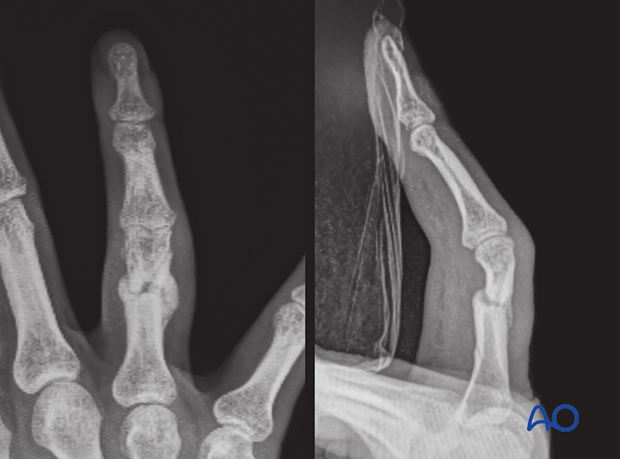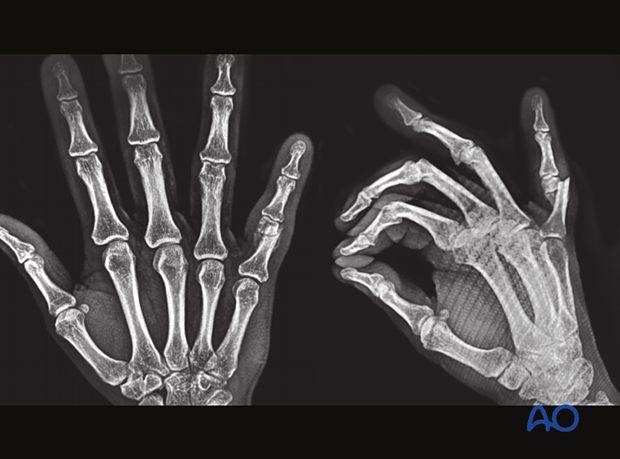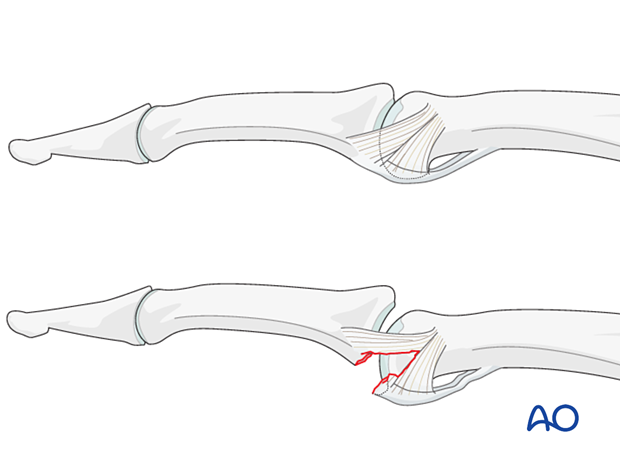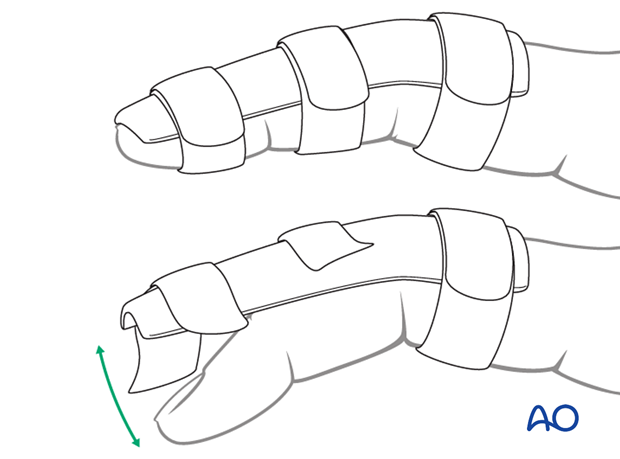Complications and technical failures
1. General considerations
The most frequent complications are related to soft-tissue problems including tendon adhesions, intraarticular fibrosis, and scarring around implants and the surgical site. Attention to careful soft-tissue management and early rehabilitation including mobilization and appropriate splintage are all relevant to prevention of these problems.
Common complications of these injuries are:
- Malunion
- Nonunion
- Infection (general complication)
- Tendon adhesion
- Soft-tissue contractures
Malunion and nonunion may cause subsequent degenerative changes in the associated joints.
Soft-tissue adhesions and contractures will cause restriction of movement and may promote instability at the affected joints.
If symptoms become functionally intrusive, revision surgery may be indicated.
2. Malunion
Prevention
- Anatomical reduction
- Stable fixation
- Intraoperative assessment of construct stability
- Postoperative radiological assessment of reduction and fixation

Consequences of malunion
Malunion is usually a consequence of inaccurate reduction and ineffective fixation.
It strongly affects the balance of flexor and extensor mechanisms and biomechanical relations of the hand. For example:
- Angulation may result in loss of grip strength.
- Rotation is usually associated with an oblique or spiral fracture and may result in loss of length leading to reduction of dexterity.
- Rotational malalignment will also compromise palmar grip, resulting in weakness due to conflict with neighboring fingers.
It is crucial to confirm any alteration of alignment, especially angulation, rotation, and length.
Management of malunion
- Corrective osteotomy
- Bone graft application, if necessary
- Stable internal fixation
If an osteotomy is indicated, consider correction of rotational malalignment at a different site to avoid further soft-tissue damage.
3. Nonunion
Signs for nonunion are pain and nonbridging healing on x-ray or CT in a period of 6–9 months after treatment.

Prevention
- Gentle operation technique to avoid damage to bone, soft tissue, and vascular supply
- Intraoperative assessment of construct stability
- Postoperative radiological assessment of reduction and fixation
- WALANT (wide awake local anesthetic no tourniquet) techniques permit intraoperative assessment of stability so that early rehab can be started
Concomitant injuries should be addressed at the same time as the fracture to improve stability.
Appropriate postoperative management will help to protect the fracture.
Management of nonunion
Treatment of nonunions includes:
- Nonunion resection
- Bone graft application
- Stable internal fixation
4. Volar rim and volar plate injuries in the proximal interphalangeal joint
Complications
In dislocation of the proximal interphalangeal (PIP) joint, ligaments are often ruptured. These soft-tissue injuries usually heal without reconstruction. However, collateral ligament and volar plate ruptures may need repair (anchor sutures or bone tunnels) if the joint remains unstable after reduction and fixation.

Management
Volar plate avulsion fractures without radiological subluxation and small fragments <2 mm are treated preferably nonoperatively with an extension block splint. This would allow for some flexion of the joint to prevent stiffness.

Displaced large fragments (>30% of the articular surface) or fragments rotated more than 90º are an indication for reduction and fixation.
CT imaging is recommended to assess the true size of fracture fragments as they may be bigger than observed on an x-ray due to cartilaginous components.
Depending on the size of the fragment, the fracture is stabilized with lag-screw or K-wire fixation, suture anchor or bone tunneling, or cerclage wiring.
An extension block splint should be applied for 4 weeks to support the internal fixation.













